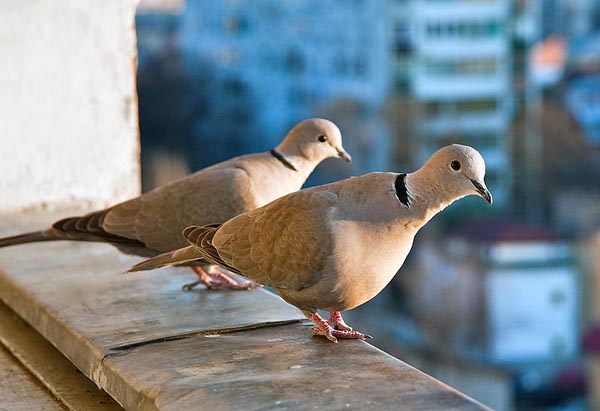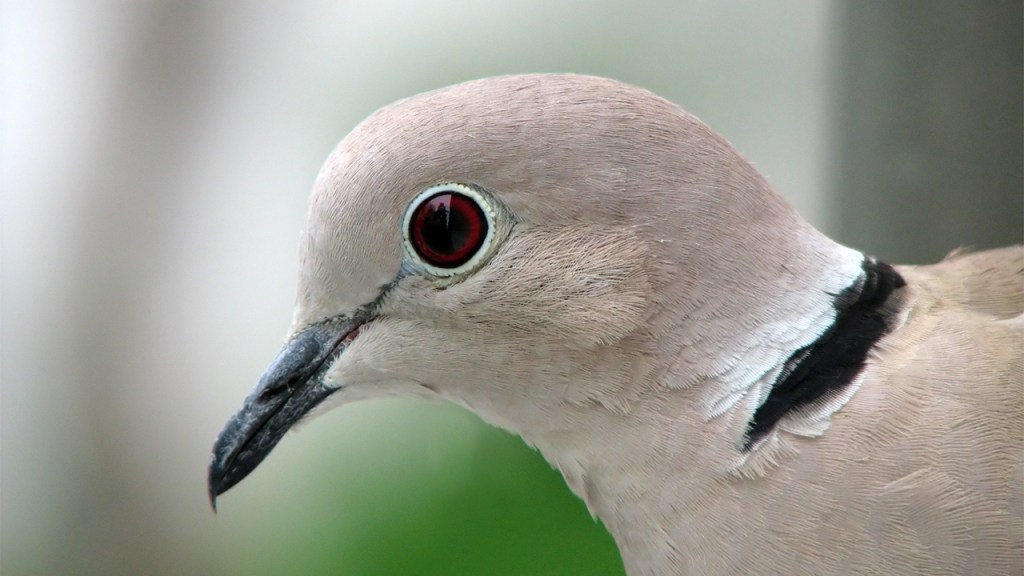The Great Backyard Bird Count (GBBC) — one of the largest citizen science initiatives in the world – annually documents a wide variety of bird population trends.
To my mind, one of the most interesting has been the dramatic spread of the non-native Eurasian collared dove across North America.
The GBBC asks citizen birders to watch an area for at least twenty minutes sometime during a four-day period in mid-February (this year’s count concluded yesterday), and record the birds they see.
Just ten years ago, seeing a Eurasian collared dove would have been a novelty. No more: the doves are now commonly reported by birders in most of the United States.
GBBC data tell the story of this rapid spread.
In the 1970s, the Eurasian collared dove was introduced to the Bahamas. By the early 1980s, the non-native birds made their way to South Florida, where they established populations. Then they began spreading north and west.
Their range appears to have expanded slowly at first. A look at GBBC reports from 1998 show a lot of sightings in Florida, with some birds reported in Texas, Alabama and Arkansas.
By 2001, the doves reached California.
Last year’s bird count results showed the Eurasian collared dove had colonized much of the country. It has not (yet) been reported in New England, but it has reached as far north as Alaska.
The GBBC’s video map dramatically illustrates this expansion.
In my state of Idaho, the doves were first recorded in 2005 by two backyard birders. In subsequent years, the bird was commonly reported in Idaho’s eastern corners. Last year, 132 GBBC participants reported 719 doves throughout the state.
I saw my first Eurasian collared dove in our backyard in 2008 – a banded bird that may have been an escaped pet. Last year, I began seeing the doves hanging around our neighborhood. This year was the first that I noted the species during my own participation in the Great Backyard Bird Count.
What’s going on here? Should conservationists be concerned about this spread?
Unlike some dove species, Eurasian collared doves aren’t migratory. However, they do readily expand into new suitable habitat. In fact, in their native Asia, Eurasian collared doves have been rapidly expanding their range as well – colonizing new countries every year.
The dove is one of those species that adapts well to humanity. The trees, power lines and bird feeders of suburbia provide perfect habitat. The Eurasian collared dove is almost always seen near homes and farms, not unbroken forest or prairie.
Research indicates it is not adversely affecting native mourning doves or other birds. It may simply be filling a new habitat niche created by suburban habitat. But it is still early in the spread.
Could Eurasian collared doves become an invasive threat? That remains to be seen.
Citizen science projects like the GBBC and another citizen initiative, Project FeederWatch, will help scientists continue to track the spread and impacts of the species. It will be interesting to learn what this year’s count found about Eurasian collared doves. If past years are any indication, their populations will likely have grown and spread into new areas of the country.
Have you seen Eurasian collared doves in your area? Have you noted other trends during your backyard bird counts? Let us know what you’re seeing!





We had the collared doves in our yard and grapefruit trees during May, June and July. They nested in our grapefruit trees and drank from our water fountain. There were 10 to 20 of them. We keep bird food out all the time. They seem to have disappeared around the first week of August. Call us or send email with questions
Carl Ariola. PHOENIX Az
These are common in Live Oak, CA 95953 in the city limits. Their song is quite different than the dove from the midwestern United States.
We have these birds at our feeder for the last four years in a row, at first, just one, and this year, a pair that has been here for most of the summer! This area is also home to a healthy population of mourning doves.
I live in the Comox Valley on the eastern coast of central Vancouver Island in British Columbia, and very much enjoy all the birds that visit.
Hi Matt
I am happy to report that we have a couple of these doves in our area.this is in Mission B C Canada.I have been hearing a birdsong like a mourning dove for some time.Does this dove have a similar song?
Hi, Thank you for the question! You can hear the song of the EU collared dove on Cornell Labs: https://www.allaboutbirds.org/guide/Eurasian_Collared-Dove/sounds
Positive I.D. on this bird outside my house today (Aug 7, 2017). I live on Shuswap Lake in the interior of BC. This is the first year we’ve heard or seen them.
This year is the first time I have seen the Eurasian banded dove. We have two pairs plus one. They come here daily to be fed with other wild birds. We are located in Las Vegas.
I’m going strictly by bird song here, but saw a mating pair in Jacksonville FL in August.
Three coo ‘s and a small trill, over and over until mate appeared.
Smaller than mourning dove
Northeast Alabama here. I began seeing these beautiful doves just a couple of weeks ago at my backyard feeder. Just two at a time, at first I thought they were odd-colored siblings. Apparently they are a pair. They seem rather meek & mild compared to my usual rowdy bunch of regular Mourning Doves, Grackles,
Cardinals, Wrens, Finches, Bluejays, Sparrows, etc. They are lovely.
San Luis Obispo, CA….just recently started feeding the birds. Scrub Jays first and now Eurasian Collared Doves. Two at the feeder this morning and one back this afternoon. Jays chase them away…or at least down to the ground for the scattered seed. Also drinking from the fountain. Beautiful big birds. Haven’t noticed their call yet.
We have seen these birds as early as 2014 in Cumberland BC (on Vancouver Island) Canada. They are now present also on Texada Island BC Canada. We first noticed a couple last summer (2016) and this summer (2017) there certainly seem to be more as people keep putting out bird feeders. I am not happy about their arrival here.
I’m so excited to find out about this Dove. I took pictures out the backdoor at the birdfeeder and posted it on Facebook. My nephew commented and told me what kind of Dove it was, Eurasian. So I looked it up and so happy to learn about it. I knew it was different from the other Doves. Love hearing it cooing.
GOOD MORNING
THIS MORNING IN RIVERSIDE CA, CAPATURED A BIRD, THAT THE CAT WAS STALKING.
IT IS AN EURASIAN DOVE.
Sighted this bird among mourning doves several times in my yard SW Washington 6/9/17.
I live in Merced, CA (Central Valley). I have seen one or two in my backyard in the past 2-3 years. Always alone and a rare sight for me. I do have friends closer to the CA coast that has been overtaken with these Doves.
I have a home in San Fernando Valley, southern california… there are a pair of these doves who frequent my yard daily. Larger then the morning doves and a much deeper and louder coo!